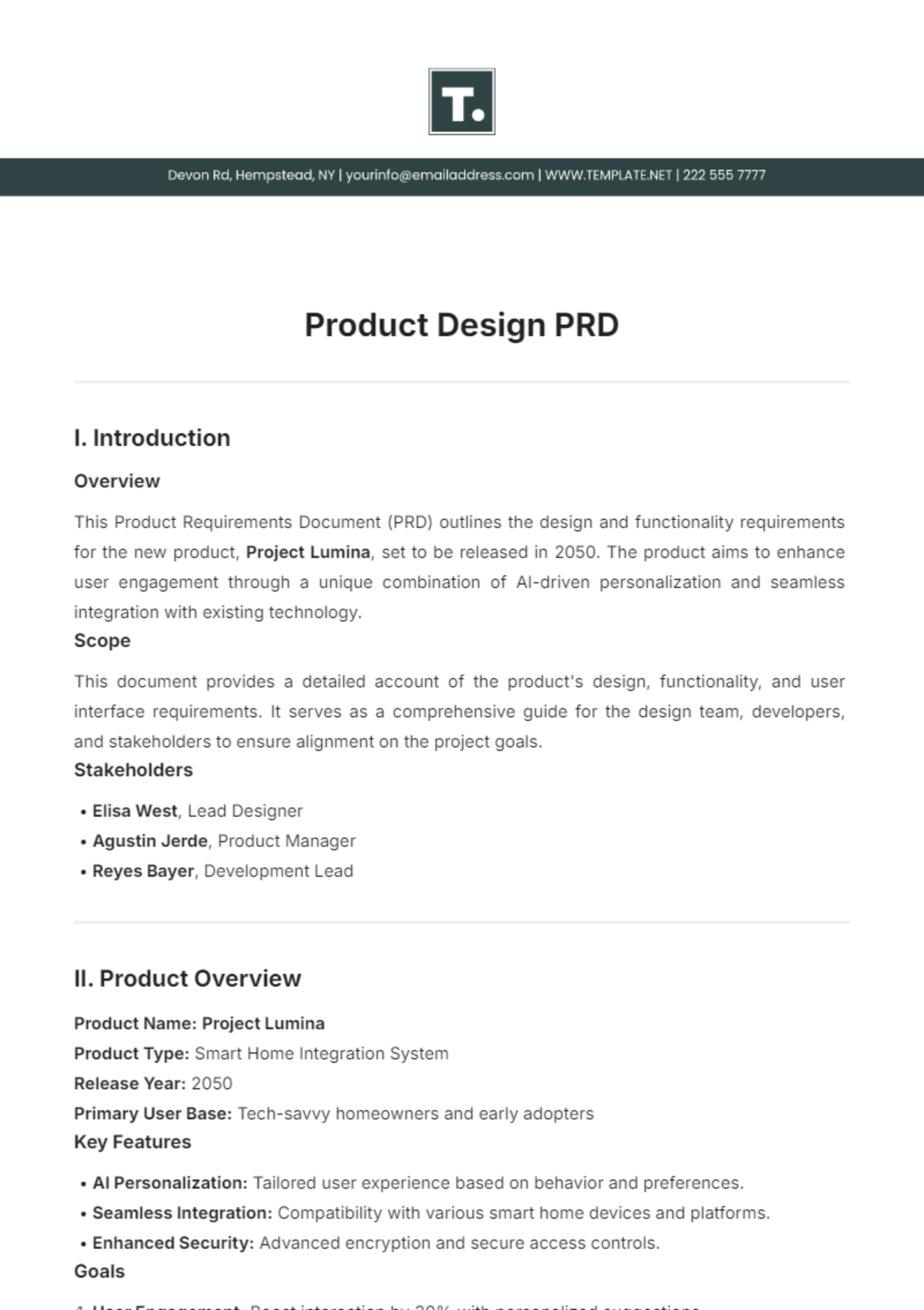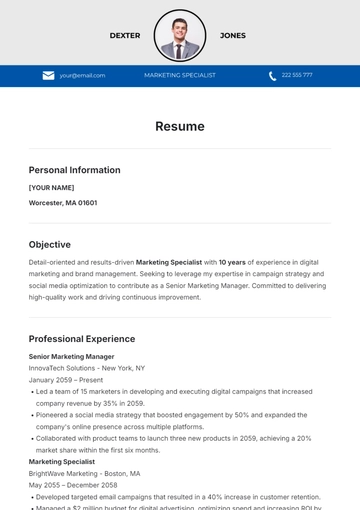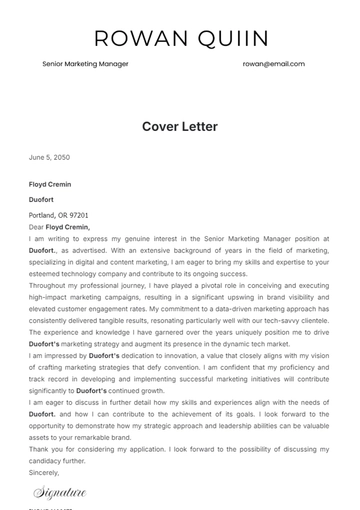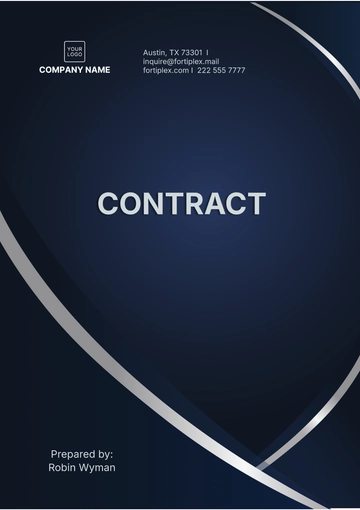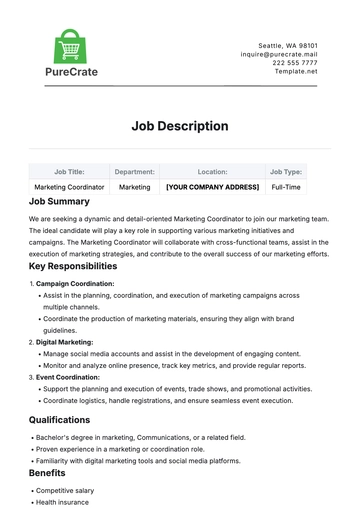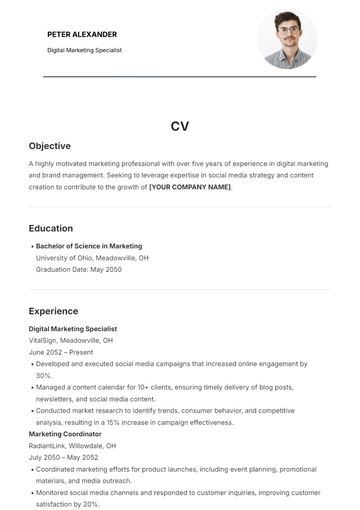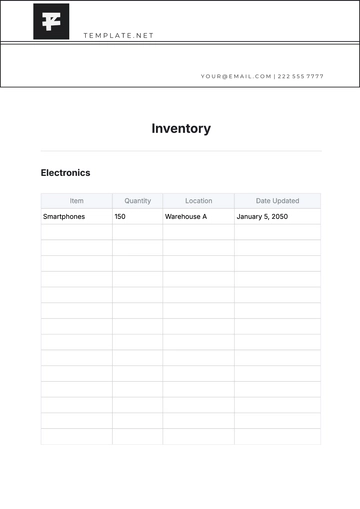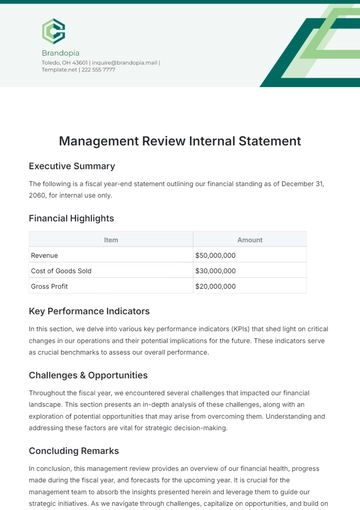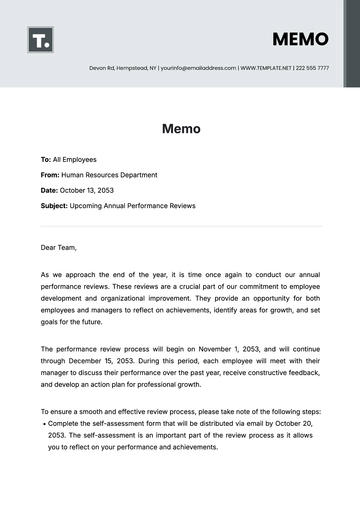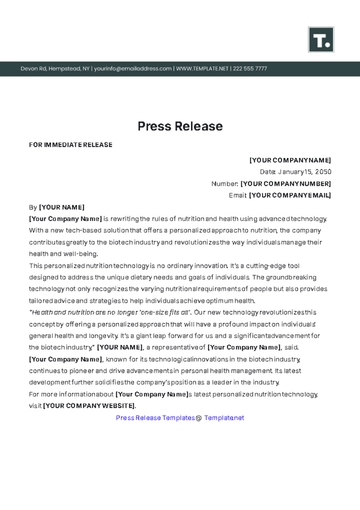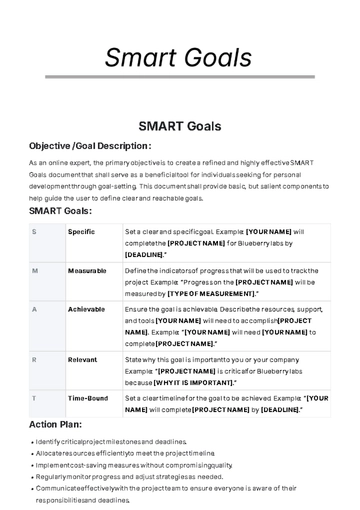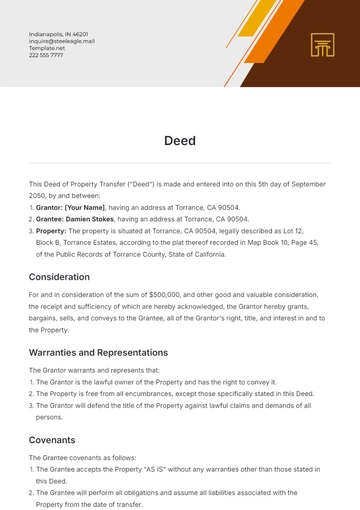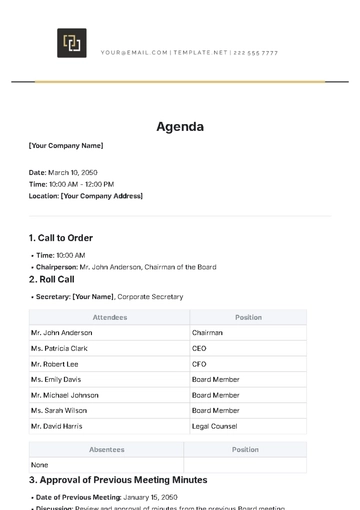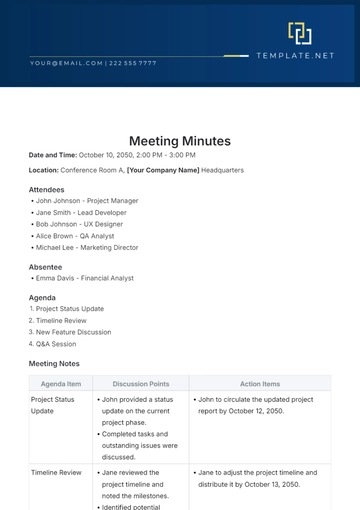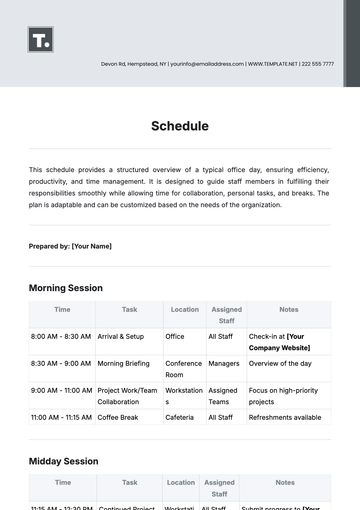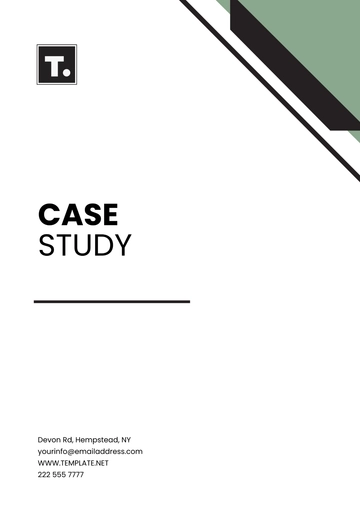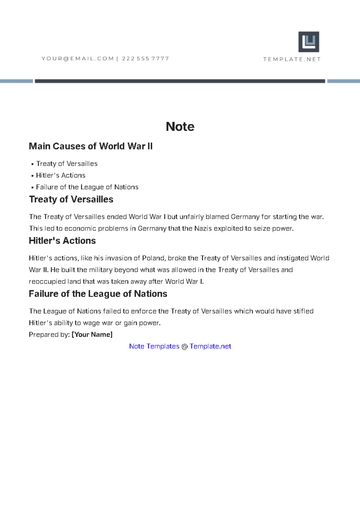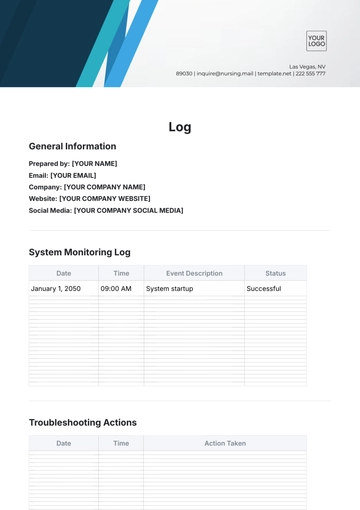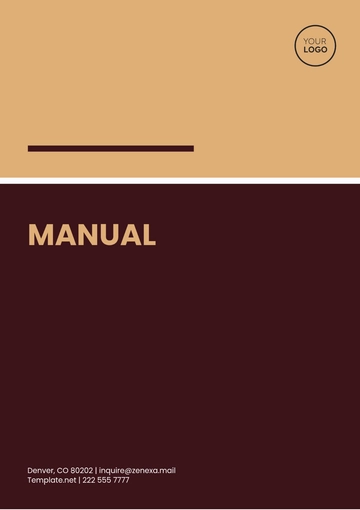Product Design PRD
I. Introduction
Overview
This Product Requirements Document (PRD) outlines the design and functionality requirements for the new product, Project Lumina, set to be released in 2050. The product aims to enhance user engagement through a unique combination of AI-driven personalization and seamless integration with existing technology.
Scope
This document provides a detailed account of the product's design, functionality, and user interface requirements. It serves as a comprehensive guide for the design team, developers, and stakeholders to ensure alignment on the project goals.
Stakeholders
Elisa West, Lead Designer
Agustin Jerde, Product Manager
Reyes Bayer, Development Lead
II. Product Overview
Product Name: Project Lumina
Product Type: Smart Home Integration System
Release Year: 2050
Primary User Base: Tech-savvy homeowners and early adopters
Key Features
AI Personalization: Tailored user experience based on behavior and preferences.
Seamless Integration: Compatibility with various smart home devices and platforms.
Enhanced Security: Advanced encryption and secure access controls.
Goals
User Engagement: Boost interaction by 30% with personalized suggestions.
Compatibility: Ensure integration with at least 90% of major smart home devices.
Security: Implement state-of-the-art security protocols to safeguard user data.
III. Design Requirements
User Interface (UI)
The user interface should be intuitive and visually appealing, designed to accommodate users of varying technical expertise.
Design Elements:
Element | Description |
|---|
Home Screen | Customizable widgets and streamlined navigation. |
Settings | Easy-to-access control panel with clear options. |
Alerts | Non-intrusive notifications with actionable buttons. |
Design Guidelines:
Consistency: Maintain a consistent color scheme and typography across all screens.
Accessibility: Ensure that the design is accessible to users with disabilities, including screen reader compatibility and high-contrast modes.
Responsiveness: Design must adapt to various screen sizes and device types.
IV. Functional Requirements
Core Functionality
Personalization Engine: AI algorithms to provide customized recommendations.
Integration Layer: Interfaces for connecting with other smart home systems.
Security Module: Features for user authentication and data encryption.
System Architecture:
Component | Description |
|---|
Frontend | User-facing interface built with ReactJS and Redux. |
Backend | Server logic and database with Node.js and MongoDB. |
API Layer | RESTful APIs for integration with external systems. |
Performance Requirements:
Response Time: The system should respond to user inputs within 500 milliseconds.
Uptime: Achieve 99.9% system uptime.
V. Technical Specifications
Hardware Requirements:
Component | Specification |
|---|
Processor | Minimum quad-core 2.5 GHz or equivalent. |
RAM | At least 4 GB. |
Storage | Minimum 16 GB of free space. |
Software Requirements:
Operating System: Works with Windows 12 and major OS updates.
Dependencies: Utilizes Node.js, MongoDB, and ReactJS.
Compliance:
Data Privacy: Adheres to GDPR and CCPA regulations.
Security Standards: Follows OWASP top 10 guidelines.
VI. Milestones and Deliverables
Project Timeline:
Milestone | Date | Deliverable |
|---|
Prototype Review | March 15, 2050 | The initial prototype for stakeholder feedback. |
Beta Testing | June 1, 2050 | Beta version release and testing phase. |
Final Release | September 1, 2050 | Official product launch and marketing campaign. |
Deliverables:
Design Mockups: High-fidelity designs for all user interface elements.
Technical Documentation: System architecture and API documentation.
User Guides: Comprehensive guides and tutorials for end-users.
VII. Risk Management
Potential Risks:
Integration Issues: Compatibility problems with third-party devices.
Security Vulnerabilities: Data breach risks.
Mitigation Strategies:
Thorough Testing: Extensive integration testing with various devices and systems.
Regular Security Audits: Frequent security assessments and updates.
Contingency Plans:
Fallback Mechanisms: Use alternative solutions for major integration failures.
Incident Response: Develop a response plan for potential security incidents.
VIII. Appendix
Glossary:
AI: Artificial Intelligence
API: Application Programming Interface
GDPR: General Data Protection Regulation
OWASP: Open Web Application Security Project
References:
Contact Information:
[Your Company Name]
[Your Company Address]
[Your Company Email]
